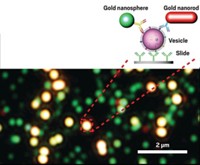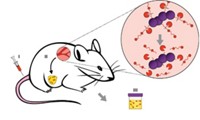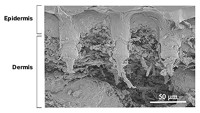Advertisement
Grab your lab coat. Let's get started
Welcome!
Welcome!
Create an account below to get 6 C&EN articles per month, receive newsletters and more - all free.
It seems this is your first time logging in online. Please enter the following information to continue.
As an ACS member you automatically get access to this site. All we need is few more details to create your reading experience.
Not you? Sign in with a different account.
Not you? Sign in with a different account.
ERROR 1
ERROR 1
ERROR 2
ERROR 2
ERROR 2
ERROR 2
ERROR 2
Password and Confirm password must match.
If you have an ACS member number, please enter it here so we can link this account to your membership. (optional)
ERROR 2
ACS values your privacy. By submitting your information, you are gaining access to C&EN and subscribing to our weekly newsletter. We use the information you provide to make your reading experience better, and we will never sell your data to third party members.
Analytical Chemistry
A Faster Way To Diagnose Celiac Disease
Medical Diagnostics: A new biosensor detects celiac antibodies in human serum
by Erika Gebel
April 5, 2011

Judging by their symptoms, people with celiac disease could have food poisoning, depression, or iron deficiency. As a result, doctors often have trouble diagnosing the serious immune disorder. To develop a better test for the disease, researchers have made a device that can detect nanograms of gluten antibodies, the hallmarks of celiac disease, in human serum (Anal. Chem., DOI: 10.1021/ac102956p).
People with celiac disease are sensitive to gluten, a protein complex in wheat. Gluten triggers their body's immune system to attack the inner lining of the small intestine, leading to a wide range of symptoms including constipation, diarrhea, and depression. A simple treatment for celiac disease is avoiding gluten, but according to the medical literature, approximately 85% of cases go undiagnosed.
Existing tests for celiac disease look for disease-specific antibodies. These tests, such as enzyme-linked immunosorbent assay (ELISA), are time consuming and costly, so doctors only test patients with tell-tale celiac symptoms. Results from these tests can take weeks to get back because they typically involve sending samples to an outside laboratory, says Ciara O'Sullivan at Rovira i Virgili University in Spain. Sometimes doctors must use genetic testing or intestinal biopsy to confirm a diagnosis.
To create an inexpensive and rapid test that can be used right in a doctor's office, O'Sullivan and colleagues built a device that can detect two celiac-specific antibodies in human serum. This biosensor consists of a gold chip decorated with "bait" for the antibodies. The bait is a wheat protein called gliadin that celiac antibodies bind as part of the over-the-top immune response to gluten.
To test a patient's serum, the researcher drops it onto the chip. Any celiac antibodies present bind to the gliadin proteins. The researcher then adds a solution containing an antibody that binds to celiac antibodies. This second antibody is attached to an enzyme that produces electrons when it reacts with peroxides. After washing off any unbound antibodies, the scientist adds peroxide and measures the current flowing through the biosensor chip. The size of the current is proportional to the concentration of celiac antibodies in the sample.
Using solutions of the celiac antibodies, O'Sullivan's team determined that their biosensor could detect as little as 20 ng/mL of the antibodies. In comparison, ELISA's detection limit is about 260 ng/mL. The scientists then ran tests on serum from people with the disease and found that the biosensor concentration data matched ELISA data. The test with the new biosensor took about 40 minutes, but O'Sullivan hopes to cut that down to about 15 to 20 minutes for use in doctors' offices.
The set-up could also detect other antibodies by switching out the antibody "bait," says Jean-François Masson, who makes biosensors at the University of Montreal. "There may be numerous applications," he says, because few existing antibody biosensors work with human serum.





Join the conversation
Contact the reporter
Submit a Letter to the Editor for publication
Engage with us on Twitter